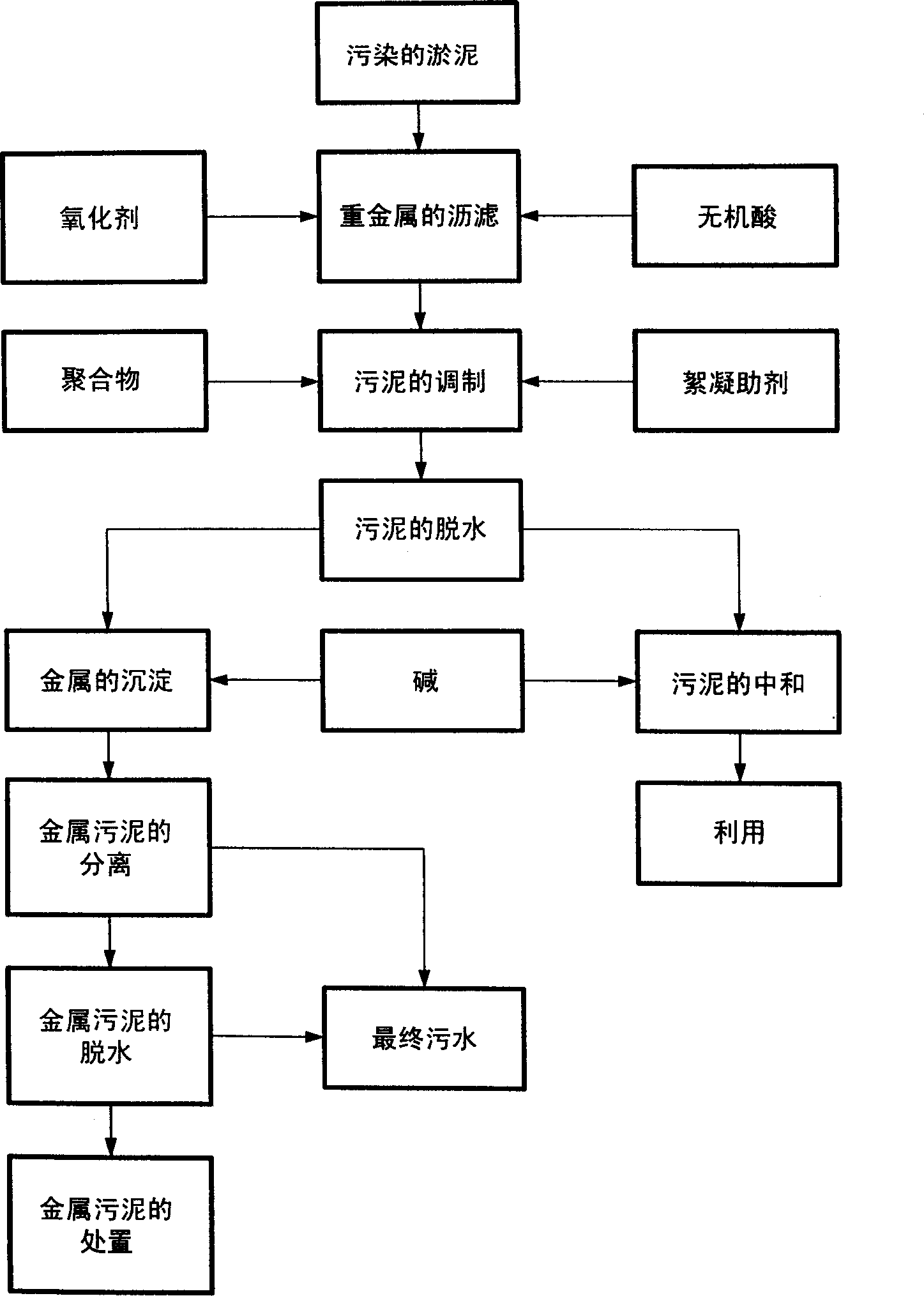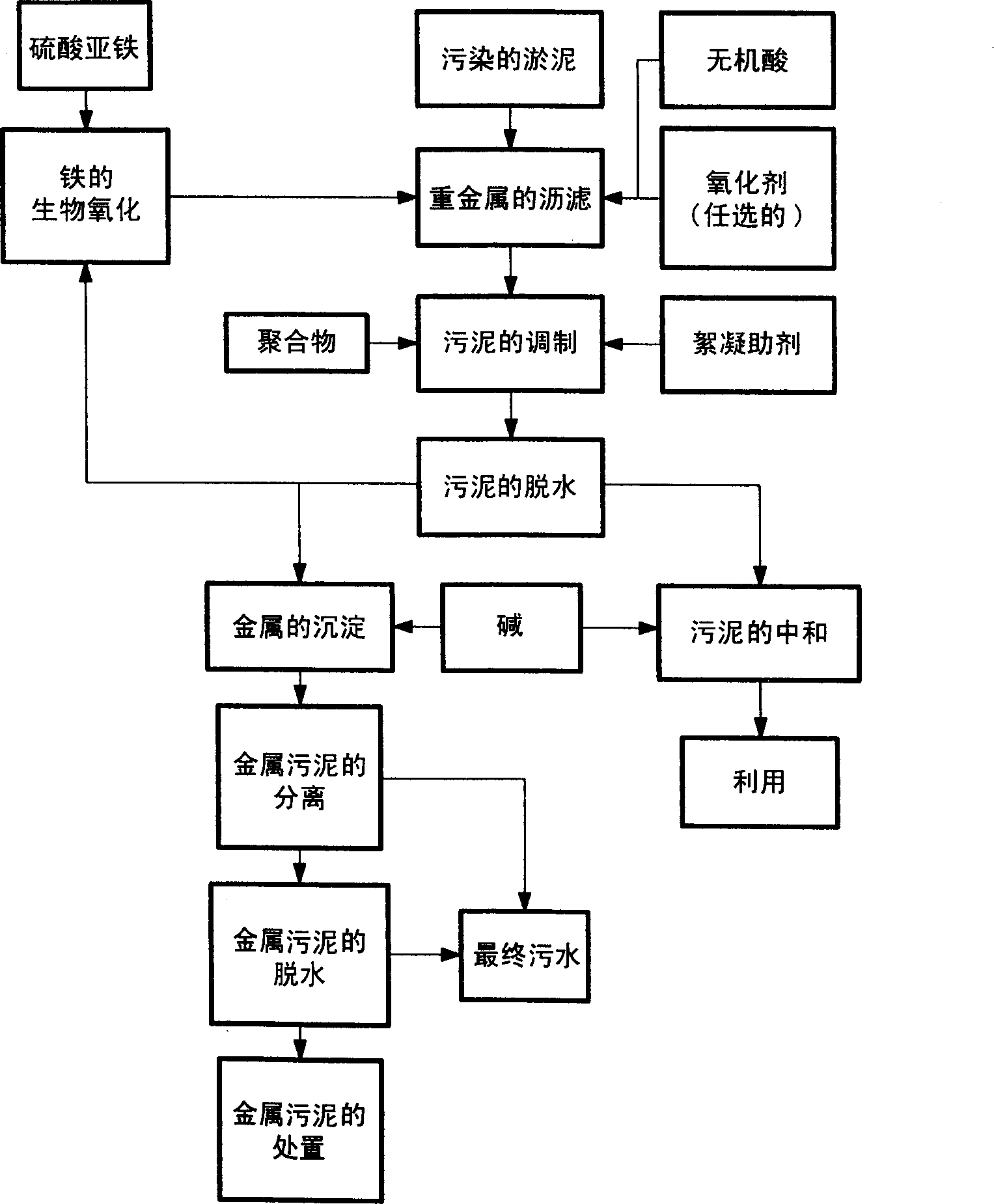Hybrid chemical and biological process for decontaminating sludge from municipal sewage
A sludge and chemical technology, applied in the direction of chemical instruments and methods, biological water/sewage treatment, oxidation treatment of sludge, etc., can solve the problems of increased investment and long treatment time, and achieve short residence time, low chemical cost, good control effect
- Summary
- Abstract
- Description
- Claims
- Application Information
AI Technical Summary
Problems solved by technology
Method used
Image
Examples
Embodiment 1
[0066] The method of the present invention was tested using ferric chloride to assist in the treatment of physico-chemical sludge from a municipal sewage process. 47 trials were performed in batch form. 143m was treated by adding sulfuric acid as an oxidizing agent and hydrogen peroxide directly to the sludge through a leaching step 3 The sludge with a total average solid content of 29.3g / L. During these tests the pH was varied between 2.0-2.6 while the redox potential was adjusted to 400-500 mV and the leaching time was varied between 1-4 hours.
[0067] The results show that it is possible to reduce the levels of toxic metals in the sludge to meet the criteria for utilization of these biota. For all sludges produced in the tests, the average contents of the following elements per kg of dewatered and clarified sludge were as follows:
[0068] Cd 5.83±2.93mg / kg Cr 127±36mg / kg
[0069] Cu 273±56mg / kg Ni 29.5±9.7mg / kg
[0070] Pb 98.6±20.4mg / kg Zn 285±115mg / kg
[0071] It ...
Embodiment 2
[0078] The purification and stabilization method of the present invention was tested on the treatment of biological sludge from municipal sewage treatment. In these studies, a total of 4 tests were performed as a batch operation. Treatment of 16m by direct addition of sulfuric acid and ferric chloride as an oxidant to the sludge through a leaching step 3 In sludge with a total average solid content of 20.5g / L. During these tests the pH was varied between 2.0-2.5 while the redox potential was adjusted to 400-490 mV and the leaching time was varied between 1-4 hours.
[0079] For these tests, the metal dissolution rates measured on a metal-in-solution basis in the dewatered filtrate of clarified sludge are given below:
[0080] Cd 90.8±11.4% Cr 63.0±2.4%
[0081] Ni 84.0±11.7% Pb 30.5±7.6%
[0082] Zn 91.8±4.5%
[0083]After 1 hour of treatment under the above leaching conditions, the sludge was tested for reduction in the concentration of total E. coli, faecal E. coli and ...
PUM
| Property | Measurement | Unit |
|---|---|---|
| concentration | aaaaa | aaaaa |
Abstract
Description
Claims
Application Information
 Login to View More
Login to View More - R&D
- Intellectual Property
- Life Sciences
- Materials
- Tech Scout
- Unparalleled Data Quality
- Higher Quality Content
- 60% Fewer Hallucinations
Browse by: Latest US Patents, China's latest patents, Technical Efficacy Thesaurus, Application Domain, Technology Topic, Popular Technical Reports.
© 2025 PatSnap. All rights reserved.Legal|Privacy policy|Modern Slavery Act Transparency Statement|Sitemap|About US| Contact US: help@patsnap.com



